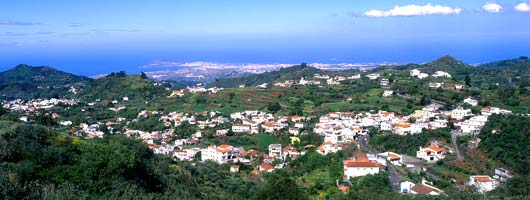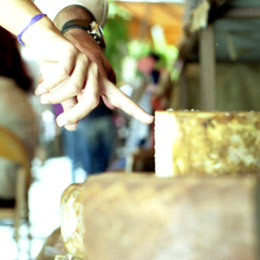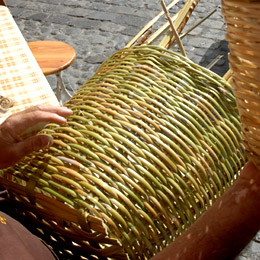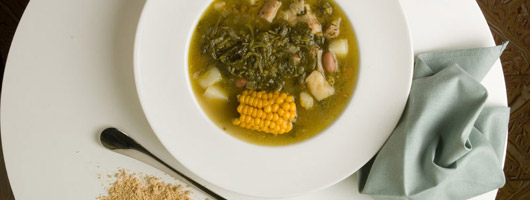Valleseco is, for the most part, an agricultural municipality with rich natural surroundings. These two factors mean that there is a large range of paths and caminos reales (originally main roads for horses and carriages) for the visitor to walk along, thus enabling him to enjoy a redoubt of laurisilva which is of great botanical value, such as the one in the Barranco de la Virgen, situated in the Parque Rural de Doramas.

Inside this Rural Park you can find la Laguna de Valleseco and the Pico de Osorio. The latter is a superb viewpoint from which you can see one of the best panoramic views of the north of Gran Canaria.
The natural enclave of the Área Recreativa de La Laguna (recreation area) houses an extensive representation of Canarian flora. It also has barbecues, water jets and tables under the chestnut trees where you can spend an unforgettable day in the country.
Calderetas is another old volcanic crater of great natural beauty in which the ochre colours of the chestnut trees mix in with the poplars, walnut trees, bottle brush etc. It is situated on one of the main caminos reales of the municipality. If we continue on towards Cueva Corcho and Crespo, we come across large extensions of pine trees which form part of the Espacio Protegido de las Cumbres (Protected Nature Area). From here there are stunning views which, on a clear day, reach as far as the sea. On the edge of the municipality there is a landscape full of contrasts around the most recent volcano on Gran Canaria, the Montañón Negro. The water network which runs from one end to the other of the municipality is considered of great importance from an ethnographical point of view. Fountains, irrigation channels, mills or washing places built in the early 19th century are part of the cultural heritage of Valleseco. It is the so-called Ruta del Agua which can be seen as you go along the footpaths.
The most outstanding building in Valleseco is the Iglesia de San Vicente Ferrer. It is a simple building of several styles, the construction of which was designed by Laureano Arroyo Velazco. Inside is a jewel from the 18th century – an organ of German origin of great historical value.
Valleseco is the ideal place to buy both locally grown produce and the most traditional handicrafts on the island.
If you should decide on the first option, the best thing to do is to go to the municipal market in the centre of the village which opens every Sunday morning from 8 am to 2 pm. There, apart from the best locally grown products, you can even find wooden furniture or plants and flowers.


But if you are after items of great traditional value, Valleseco is one of the municipalities in which handicraft skills have remained unchanged with the passage of time. The painstaking work produces beautiful articles which are works of art of Canarian craftsmanship. All these pieces can be seen in the exhibition that has been set up at the Taller de Artesanía in the centre of the village. Typical costumes, ceramics, lacework, guitars, timples (a kind of small guitar typical of the Canary Islands), farming implements or wicker baskets are just some of the valuable handicrafts that you cannot miss buying in Valleseco.
Among the culinary attractions of the municipality is the delicious cheese made at the Quesería de Madrelagua or the bread made in Lanzarote and the Recinto or the gofio del Molino also made in the Recinto. The milflores honey (produced by the local cooperative) and the honey wine are other products recognised for their high quality.

Among the dishes you can taste at the different restaurants in the area are potaje de berros (watercress stew), potaje de jaramagos (a stew made from a wild plant called jaramago) and different kinds of meat (goat, pork or rabbit) which, thanks to the tradition of stockbreeding in the municipality, are some of the best on the island. For dessert, you can try a homemade cream caramel, rice pudding or torrijas con miel (bread soaked in milk and sugar, then fried and served with honey).